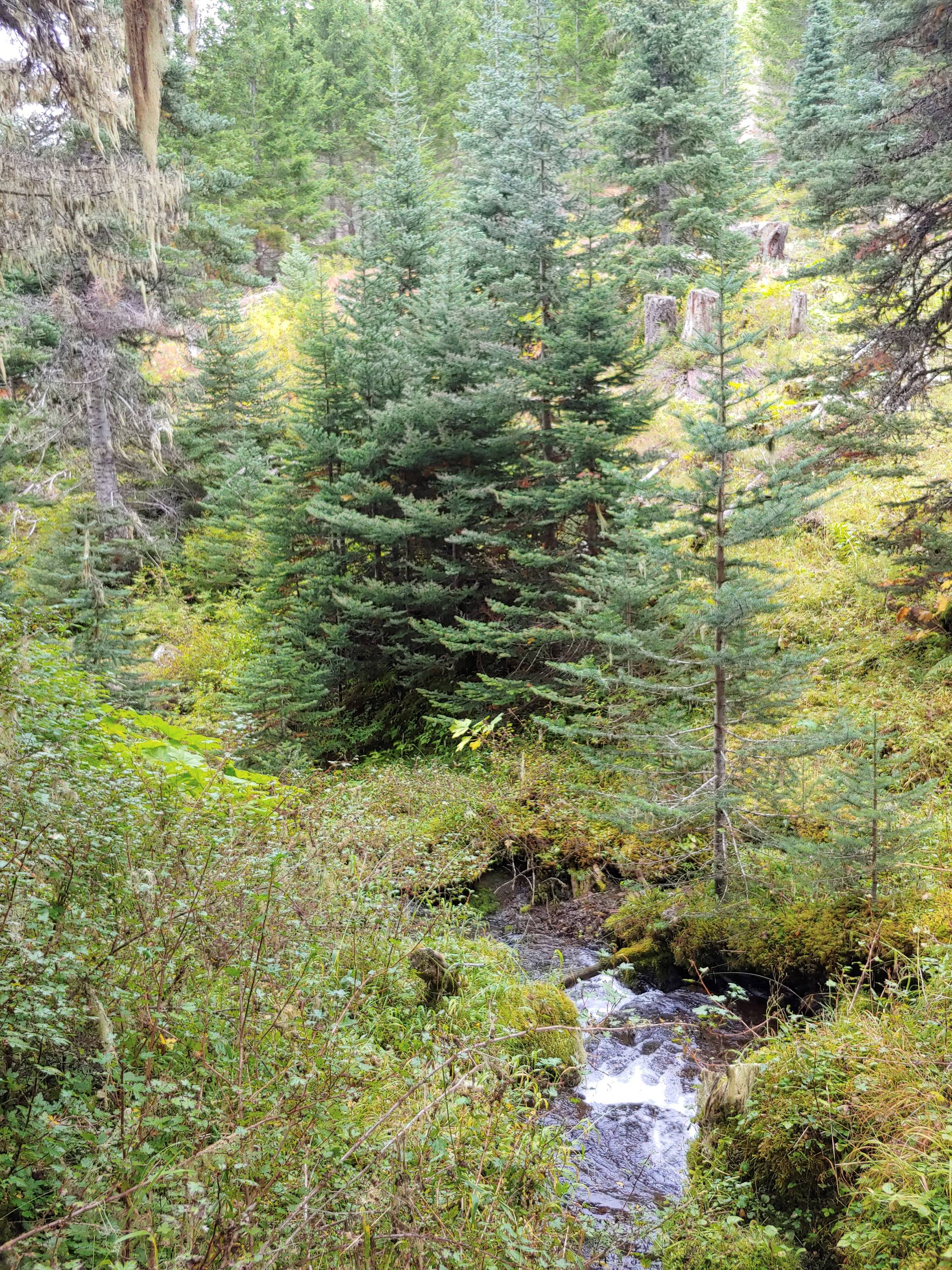Changes are coming next year for the Olympic National Forest’s trail system south of Sequim.
The U.S. Forest Service issued its decision notice for the Dungeness Watershed Roads Management Project in late October to alter about 30 miles of roads to cut costs, increase watershed health and help protect the endangered Taylor’s checkerspot butterfly.
District Ranger Yewah Lau for the Hood Canal District said in the notice that forest service staff plan to decommission about 10.4 miles of forest roads for vehicle access, treat and put into storage (with the possibility to reopen later) about 18.9 miles of forest roads, close 1.8 miles of forest roads to all public access except permitted landowners, convert 1.4 miles of roadway to trails and more.
Lau’s plan combines two proposed plans, following feedback from the public and stakeholders.
“In considering all the comments received, I recognize that there is no single management strategy that could completely satisfy all concerns that were expressed,” she wrote in the public notice.
“In making my decision for this project I have tried to align the road system in the project area with the needs to improve water quality and watershed health, better focus the Forest’s diminishing road maintenance budget on key travel ways, protect and manage for the Taylor’s checkerspot butterfly, improve recreational infrastructure directly associated with the project roads, while maintaining access for a variety of forest users and forest management activities.”
Lau said decommissioning roads typically includes removing culverts, fills, roadbeds and more while staff would look to retain roadway as much as possible for closed/stored roads.
Forest Service staff previously said in an interview that decommissioning one road could cost at least $60,000 in Sequim’s forest.
Consolidation, conversion
Parking at the Tubal Cain Trailhead will be consolidated as part of the plan with 2870000 road just past the trailhead planned for decommissioning, Lau reports.
“While my decision to decommission this section of road would add additional length of non-motorized travel to the current access point for the Silver Lakes way trail (a non-Forest Service trail), it would not eliminate recreation opportunities,” she said.
In a previous interview, Lau said the plan doesn’t close trails, but rather, “we’re lengthening them.”
As part of the Tubal Cain Trailhead consolidation, 2870230 road to the Lower Dungeness/Gold Creek Trailhead will be converted to trail and the parking lot moved to 2870000 road.
Endangered butterflies
Vehicle access in some national forest land won’t be deterred thanks to some resilient butterflies.
Lau said she considered seasonal access on the 2870270 road where Taylor’s checkerspot butterflies’ habitat was known to exist. However, she said efforts to increase habitat in the forest off roadways has seen a “rapid response.”
Staff plan to place boulders on the road’s south side near milepost 1.6 and better define the trailhead.
The butterfly was first seen in the Sequim area in 2007 and placed under the Endangered Species Act in 2013.
The plan maintains year-round access to the Maynard Burn Trailhead and Tyler Peak climbing area near the butterflies’ habitat.
Lau said the road’s condition may warrant future evaluation, though.
Impact
Despite roads closing to vehicles, Lau said informal paths would “would remain where feasible on all closed and decommissioned roads” for walking, biking, horseback riding and dispersed camping.
She said her decisions in the plan won’t result in large displacement of visitors to the trails or neighboring communities like Sequim “because modifications to recreation opportunities are not large enough to change overall visitation.”
Forest service staff previously said that funding would not likely be available until 2020 for work to close/decommission trails to vehicles to begin.
Lau said “the Olympic National Forest receives enough funding annually to cover about 20 percent of the full cost to keep the existing forest road system maintained to standard.”
“Every effort is made to coordinate maintenance work to make efficient use of funds, such as using equipment to work on roads near other roads or areas where maintenance is already occurring,” she said.
“However, every mile maintained, counts against already scarce funds. As a result, it is important to set priorities and spend funds where they are most needed. All decisions to decommission or lower road maintenance frequency aim to reduce the overall miles that need to be maintained, thus saving funds for the highest priority roads.”
According to the Dungeness Watershed Roads Management Project Preliminary Environmental Assessment document, the estimated annual maintenance budget for the Forest Service’s 1,413 miles of current open road system is about $3.4 million including administration costs.
Deferred maintenance costs in the Olympic National Forest are estimated at about $50 million, the assessment states.
For more information about the Dungeness Watershed Roads Management Project ruling, visit www.fs.usda.gov/project/?project=49643 or www.fs.usda.gov/olympic.
For more information, contact Dana Butler at 360-956-2280 or dana.butler2@usda.gov.
Reach Matthew Nash at mnash@sequimgazette.com.



